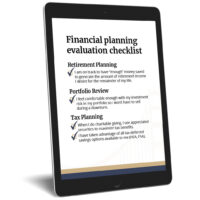
Your company-sponsored 401(k): how and why to improve employee participation
Imagine a tug-of-war, but instead of ropes, it’s financial priorities. On one side, there’s the immediate pressure of rent, car payments, groceries, and childcare. On the other, a secure and comfortable retirement down the line. For many employees, the future often loses this battle.
A company-sponsored 401(k) plan can be a win-win scenario for both you and your employees—but only when employees take advantage of it. This article explores the reasons why some workers may choose to opt out or save less. And more importantly, how you, as an employer, can help them make the choice to start using this valuable tool.
Read on for strategies to help you boost employee 401(k) participation and prepare your workforce for a secure retirement.
Why some employees may choose not to participate in the company 401(k)
Participation in 401(k) plans is up, thanks to SECURE 2.0 Act initiatives like automatic enrollment and auto-escalation. But some employees are still sitting on the sidelines when it comes to their retirement savings.
There are multiple scenarios that could lead to this. Some employees—especially lower earners—may be focused on current financial obligations, like rent, daycare, or paying off student loans. Others could be sandwiched between kids’ college tuition and caring for aging parents. Or, they may simply be young and not focused on retirement just yet.
Another factor is that new hires are overloaded. Between onboarding and daily tasks, choosing a 401(k) setup often becomes an afterthought.
How higher employee 401(k) participation benefits your business
Helping employees build a secure retirement through 401(k) participation benefits everyone. It strengthens their financial future, and offers additional advantages for your company.
Attract and retain top talent
A strong company-sponsored 401(k) program can be a magnet for top talent. Health insurance and 401(k) plans are the top two must-have benefits for workers, according to a recent plan participant study by Schwab.
Robust employer 401(k) plans can make employees feel valued and invested in by their company, leading to higher satisfaction and lower turnover. Not only that, but top performers will recognize the additional value it brings to their total compensation package, making them more likely to resist the lure of outside opportunities.
Improve employee wellness
There’s evidence that employer-sponsored 401(k) plans can contribute to overall employee wellness. First, it reduces financial stress by allowing employees to save for retirement systematically. This can lead to less anxiety about future financial security.
Financial stress can be a major distraction at work. So, when employees feel confident about their retirement savings, they’re likely to be more focused and productive.
Boost your plan’s cost-effectiveness
The more participants you have in your company-sponsored plan, the better your plan works. This is because many 401(k) plan fees are based on a percentage of total assets under management. With more employees contributing, the total asset pool grows, leading to lower fees as a percentage of total contributions. It’s good for you, and good for your people.
Administering a 401(k) plan involves record keeping for each participant. While adding a single employee might seem insignificant, the cost of managing numerous inactive accounts can add up. Increased participation reduces the number of inactive accounts, streamlining administration and potentially lowering overall plan costs.
Strategies to increase participation in your 401(k) program
Make enrollment easy and automatic
Automatic enrollment nudges participation by signing employees up at a pre-determined contribution rate, such as 3%, unless they opt-out. This option removes the procrastination element that keeps many employees from joining and helps employees who are not familiar with financial planning to start saving. You can further simplify the process by offering online enrollment with easy-to-understand explanations. However, it is critical to communicate to employees that 3% is just a starting point and will not be enough to accomplish their retirement goal,s and that most people should strive to save 10-15% or more depending on their goals and how much they’ve saved in the past.
The auto enrollment feature will be required starting in 2025 (as part of SECURE 2.0) for 401(k) and 403(b) plans adopted after December 29, 2022*. But you can start taking advantage of the associated tax credit right now if you qualify. For employers with no more than 100 employees who received at least $5,000 in compensation in the preceding year, the tax credit ranges from $500 to $5,000 per year for the first three years the feature is included as long as you meet all of the criteria the IRS outlines.
*exemptions include small companies with 10 or fewer employees, new companies in business for less than three years or church and government agencies. SECURE 2.0 Act’s Automatic Enrollment Provision: Pros, Cons.” Kiplinger, 10 Mar. 2023, https://www.kiplinger.com/retirement/secure-2-act-automatic-enrollment-provision.
Offer frequent election periods
By offering frequent election periods for your company 401(k) plan, you give your employees freedom to adapt their contributions as their financial situation evolves. This could mean employees can increase their personal contribution as they receive a raise, or temporarily lower it during periods of unexpected expenses.
The ability to make frequent adjustments can increase the appeal of participating in the 401(k) plan. Employees may be more comfortable committing to a higher deferral rate knowing they can easily adjust it down the line if needed.
Plans can offer changes on a monthly basis, or even with each paycheck. However, it’s important to strike a balance. While frequent election periods are great for employees, excessive adjustments can increase the administrative burden on the plan. Your plan provider can help you find the sweet spot between flexibility for employees and efficient plan administration for your company.
Offer (and promote) a 401(k) contribution match
When your company offers a match, it adds “free money” to your employees’ retirement kitty for every dollar they contribute, up to a certain limit. This acts like a supercharger for their savings, accelerating their path to a secure retirement—without denting their take-home pay.
Show the match math in action to make sure your employees understand the impact of your generosity. Such as:
Let’s say Emily makes $50,000 and contributes 5% of her salary ($2,500 annually) to the 401(k). Your company offers a 50% match (for an additional $1,250). Over 20 years with a conservative 6% annual return, Emily’s contributions alone would grow to approximately $92,000. However, with the employer match, her nest egg balloons to nearly $138,000!
With simple examples like this, it’s hard not to see the value. You could also use charts, graphs or other visualizations to illustrate how—with your match—even a small contribution can make an impact on their retirement.
Maintain your match, even in hard times
While 401(k) plans do involve some cost, cutting your employer match (or scrapping the plan altogether) during economic downturns can be a false economy. An employer match is a powerful symbol of your investment in your employees’ long-term well-being. It boosts morale, reduces turnover, and incentivizes plan participation–leading to a more engaged workforce that contributes more of their own salary. If desired, you can also add a vesting period for the match to encourage employee retention.
Think of your match not as a cost, but as an investment in a stable and productive employee base.
Communicate proactively about your 401(k) plan
The initial explanation of your company’s 401k plan is just the first step. Consistent communication is key to keeping employees involved and engaged in their retirement savings. Here are a few ways you can do so:
- Be a steady source of updates – Employees will appreciate regular updates on changes that might affect their contributions or plan features. For example, the recent SECURE 2.0 legislation included changes like letting employers offer a match for student loan payments, higher 401(k) catch-up contributions, and a tax credit of up to 50% for participating in a retirement plan or contributing to an IRA (restrictions apply).
- Remind them of the benefits – Periodically remind employees about the specific perks of your company-sponsored 401(k) plan and why saving for retirement is so important. Highlight the features that benefit them, like employer matching contributions, investment options, and the power of compound interest. Make sure they know it means you value them.
- Mix up your communication methods – Cater to different learning styles by using a variety of communication methods, including digital resources like explainer videos, online portals, or recorded education meetings, in-person presentations and workshops, and print materials like brochures. Make sure materials are customized to your specific plan and easy to understand for a non-finance audience.
- Offer individual attention – Some people will need personalized guidance. Offer employees the chance to schedule short (15-minute) one-on-one meetings with your benefits or compensation lead, or hold regular office hours for open consultations. Yes, it takes time, but individual attention can be invaluable for clearing up doubts and questions.
- Educate from outside – Why not bring in your plan’s fiduciary advisor to present about the impact of the match and answer questions? That same Schwab study (from above) found that confidence in workers’ ability to make 401(k) investment decisions increases with the help of a financial professional.
By following these tips, you can keep your employees informed, engaged, and empowered to make smart decisions about their future. Ready to make an impact and improve your retirement plan? Learn more about our company-sponsored retirement plan services. If you have any questions about your current plan, want support, or want to set up a new employee retirement plan, we’re happy to help.
The information provided herein is for informative and educational purposes only. The use of hyperlinks to third party websites is not an endorsement of the third party. Third party content has not been independently verified. To understand how this content may apply to you, please contact a financial advisor.






